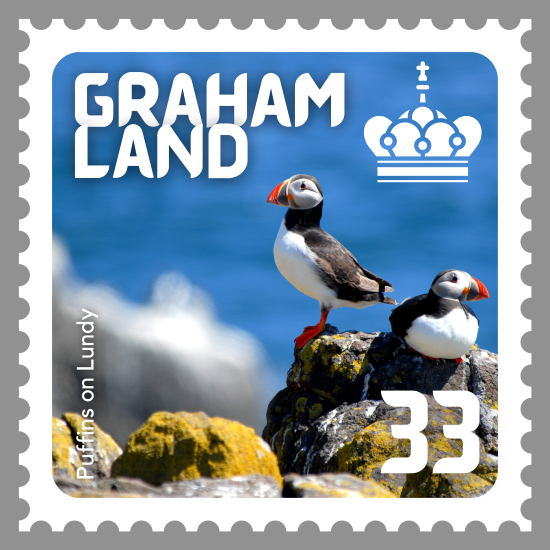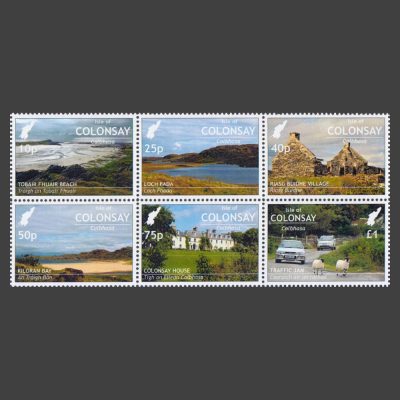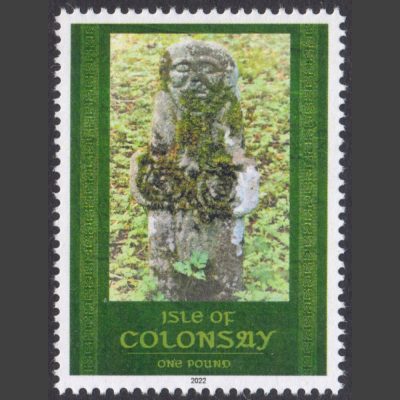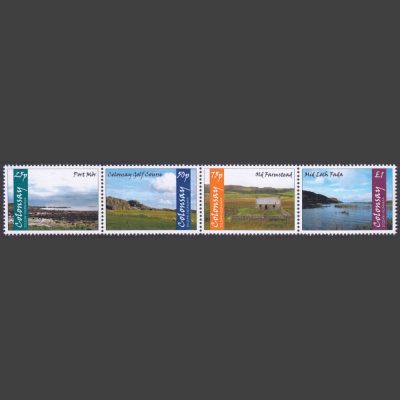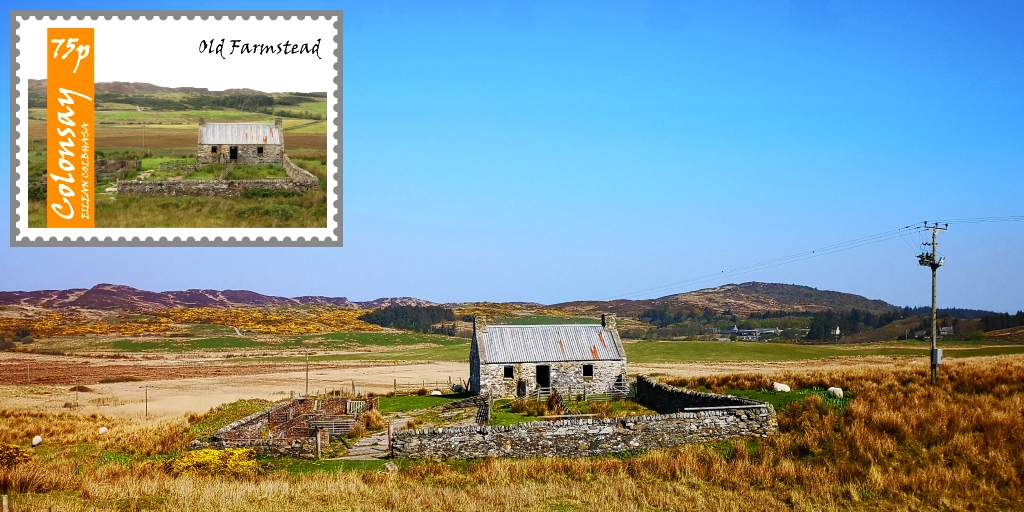
It’s not often we get a chance to visit any of the islands off the coast of Britain that have, over the years, issued – or featured on – their own local Cinderella stamps.
Some, like Lundy, Staffa, Bardsey and Caldey, can be a straightforward day trip with a bit of planning, though you do need to be staying in the right part of the world to start with. Others, like Eynhallow, can only be visited at exceptional times, or, in the case of Rockall, are barely accessible at all.
This spring, however, we were fortunate enough to have the chance to spend a whole week on the beautiful island of Colonsay, in Scotland’s Inner Hebrides.
Colonsay’s stamps
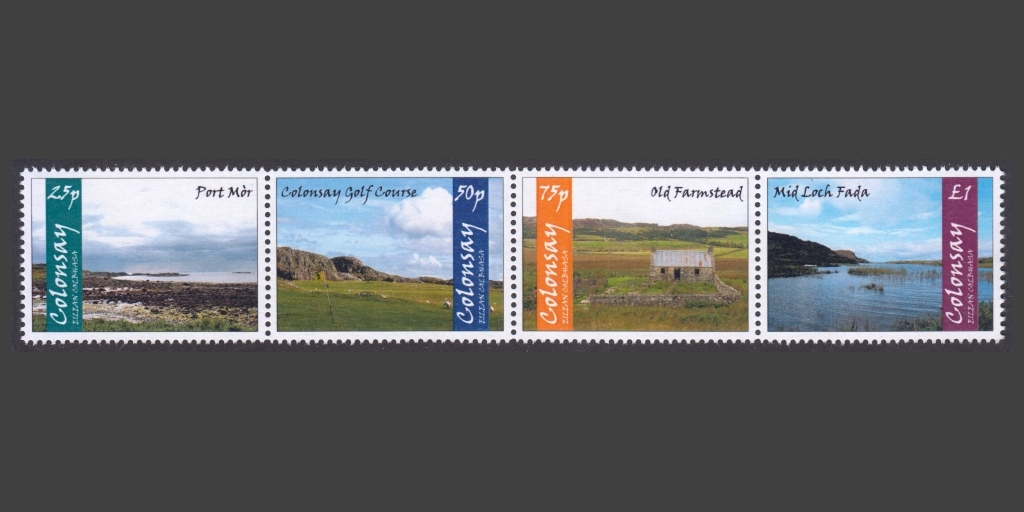
If you’re a Cinderella stamp collector, you can be forgiven for not having Colonsay on your radar: the first widely available set of stamps bearing its name, and depicting local scenes, was only produced in 2018, with another issue (“Colonsay Landscapes”) appearing in May 2019. Separately, a Canadian collector, Larry Friend, previously produced some labels bearing the names of Colonsay and other Scottish islands, though these are not widely known about, and rarely seen.
To be clear, these latest issues are fantasy Cinderellas with no postal purpose, given that the island has a fully functioning British Post Office and therefore no need for its own local postal service. The labels can, of course, be used just for fun to accompany standard Royal Mail postage stamps on mail for the UK mainland, though they are not as yet available to purchase on the island itself.
However, unlike some of the labels produced for other UK islands, these Colonsay issues are at least created by someone with strong links to the place, and feature attractive and original photographs that do an effective job of depicting and celebrating the island’s way of life.
As philatelists, all of us, at some point, will have had our interest piqued by a story or a place that has featured on a stamp – and the stamps from Britain’s offshore islands are among the most evocative of all, teasing us with colourful scenes, in miniature, of dramatic coastlines and remote communities, and encouraging us to one day seek out and experience these places for ourselves.
The island
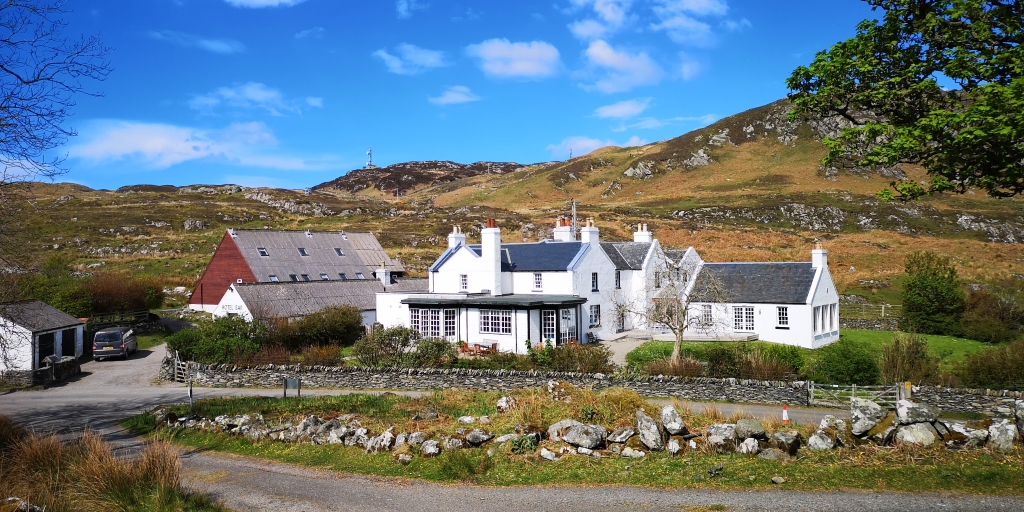
Covering an area of around 15 square miles, Colonsay is smaller and less well known than its nearest neighbours Islay and Mull, but this slightly below-the-radar status is undoubtedly part of the island’s charm. With a vibrant resident population of 135, and perhaps the same number of overnight visitors at any one time, Colonsay is lively enough to support a small number of shops and cafes, mostly scattered around the port at Scalasaig, while never feeling at all crowded.
There is a surprisingly wide range of accommodation options, too, mostly owned and managed by the Colonsay Estate, and including a delightful hotel whose cosy bar doubles as the hub of Colonsay life.
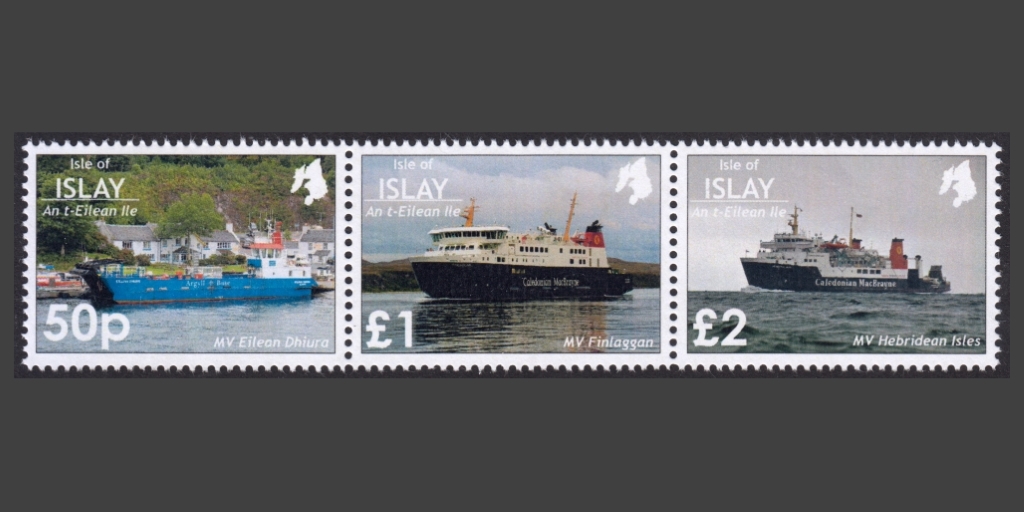
The ferry journey to Colonsay from Oban is over two hours, with a daily service in the summer season and a slightly reduced service (four days a week) in the winter. This means that if you’re visiting from the Scottish mainland you have no option but to stay over at least one night, though it is possible to do a day trip to Colonsay from Islay (but not the other way round) on summer Wednesdays and Saturdays.
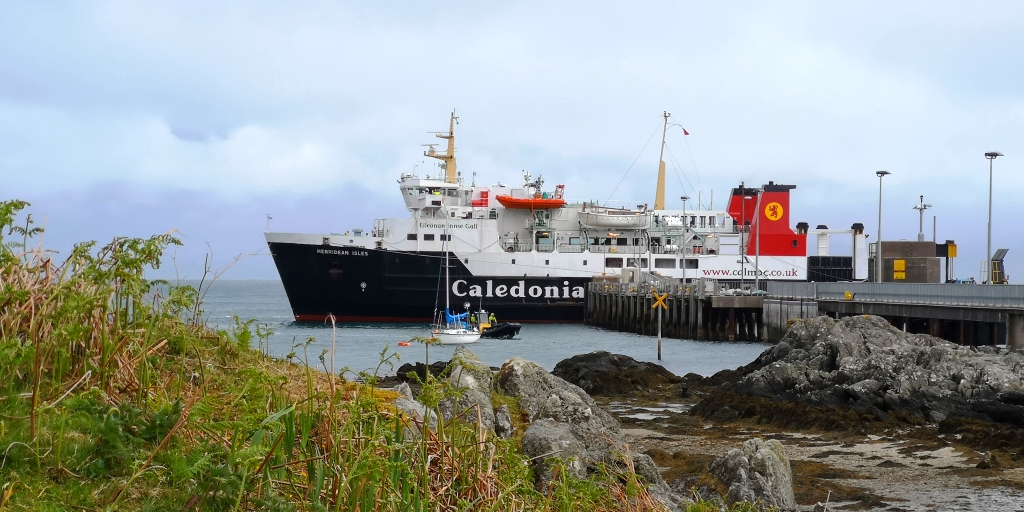
Our journey there and back was via CalMac’s MV Hebridean Isles, which, incidentally, featured on a 2019 issue for the neighbouring island of Islay.
Things to see
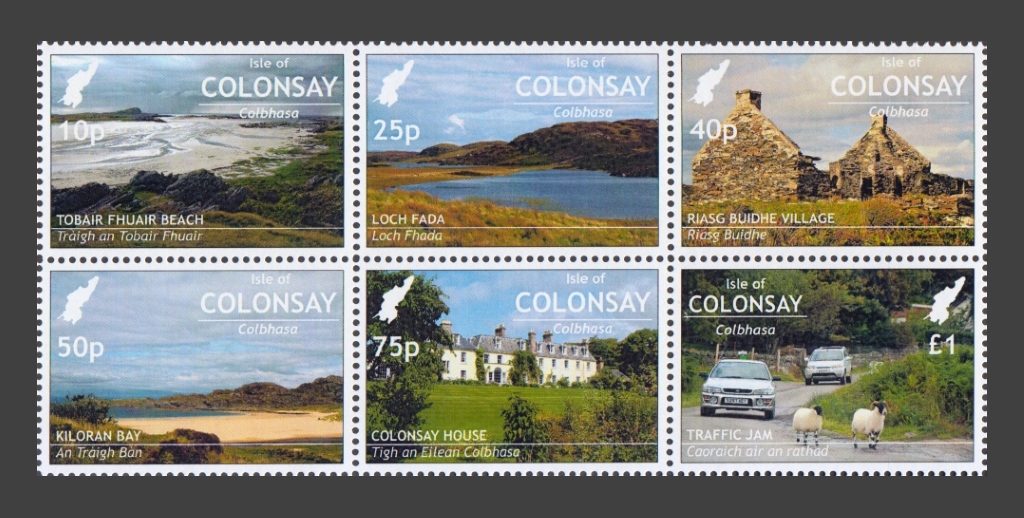
Colonsay’s compact size and wealth of walking opportunities mean that it’s not long before you spot familiar scenes from the island’s stamps!
Indeed, on the very first evening, we experienced one of the “traffic jams” depicted on the £1 value from the 2018 issue. There are cars on the island, but the local “highway code” makes clear that Colonsay’s sheep have just as much right to make use of the island’s roads as vehicles do.
One of the other attributes that Colonsay is best known for is its beaches – which feature on three of the island’s ten stamps to date. Tràigh an Tobair Fhuair (meaning “the beach of the cold well”) is a popular dog-walking spot close to Colonsay Airport on the west coast of the island, and is depicted on the 10p stamp from the 2018 issue.
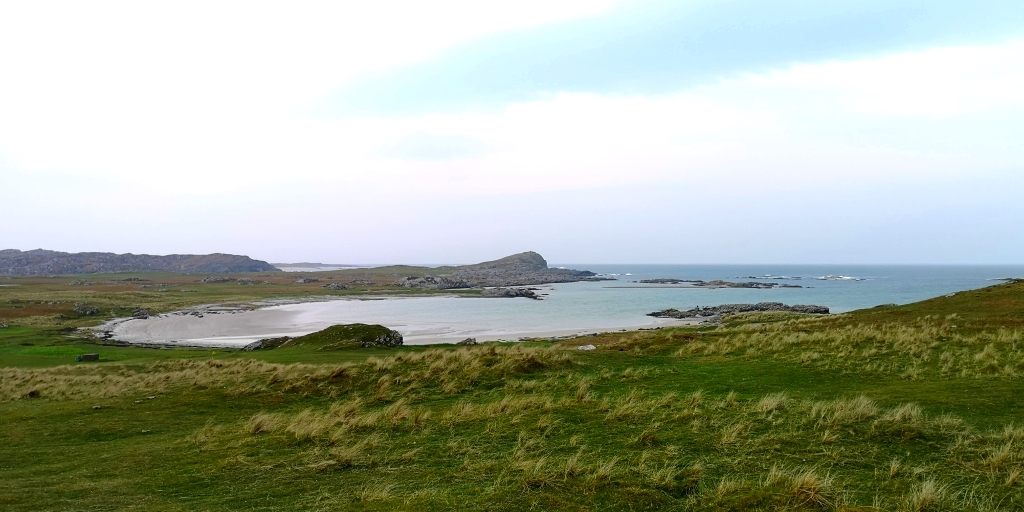
Meanwhile, a little further up the coast, you come across the bay of Port Mór, which appears on the 25p stamp from the 2019 set.
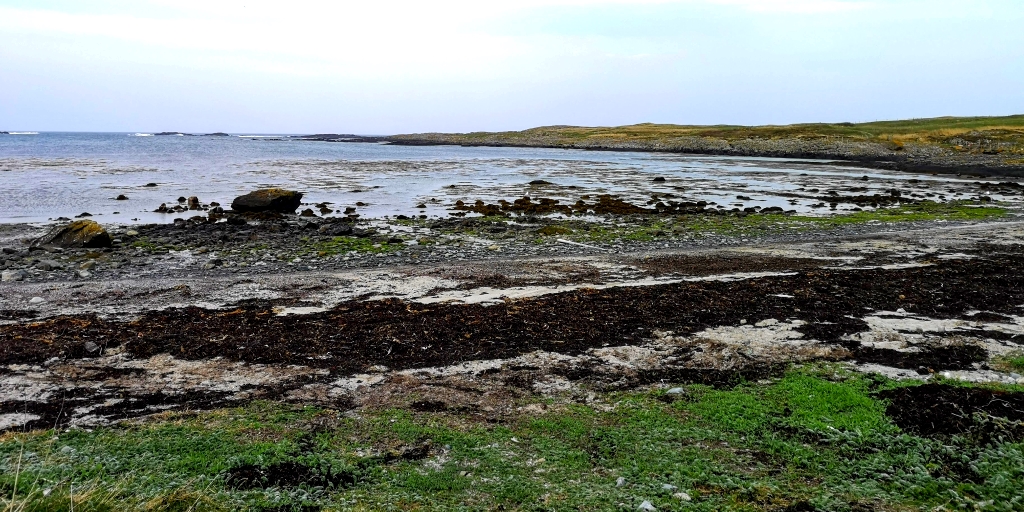
Another landmark that you’re likely to encounter during a stay on the island is the old farmstead of Laonairidh that features on the 75p stamp from the 2019 issue (pictured at the top of the page).
If you’re staying in Scalasaig – which is where the Colonsay Hotel and many of the self-catering cottages are – the most direct way to get to the north of the island is via the ancient “Old Road”, which skirts the peak of Beinn nan Gudairean (worth a short detour to enjoy the views), before dropping down to meet the main road just a short distance from Laonairidh.
There are a few different walking options from this point. Taking the road downhill leads to the atmospheric Loch Fada – really a string of three lochs – which features in both the 2018 and 2019 Colonsay issues.

In the other direction, the main road leads uphill back towards Scalasaig, where a track from the Bonaveh Recycling Centre continues to the dramatic and eerie ruins of Riasg Buidhe – once a busy fishing village, but uninhabited and abandoned since the residents were moved to new houses at Glassard in 1918. Riasge Buidhe features on the 40p stamp from the 2018 Colonsay issue.
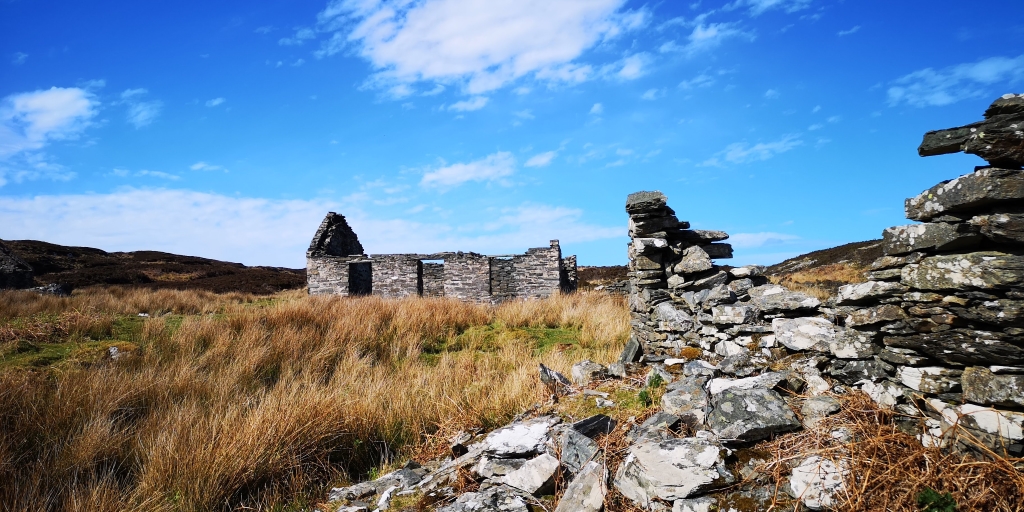
Alternatively, you can leave the main road almost immediately on an extension of the Old Road to reach Colonsay House – the centre of the Colonsay Estate, and home to an attractive garden and cafe that is open on selected days during the summer. Colonsay House features on the 75p value from the 2018 stamp issue.
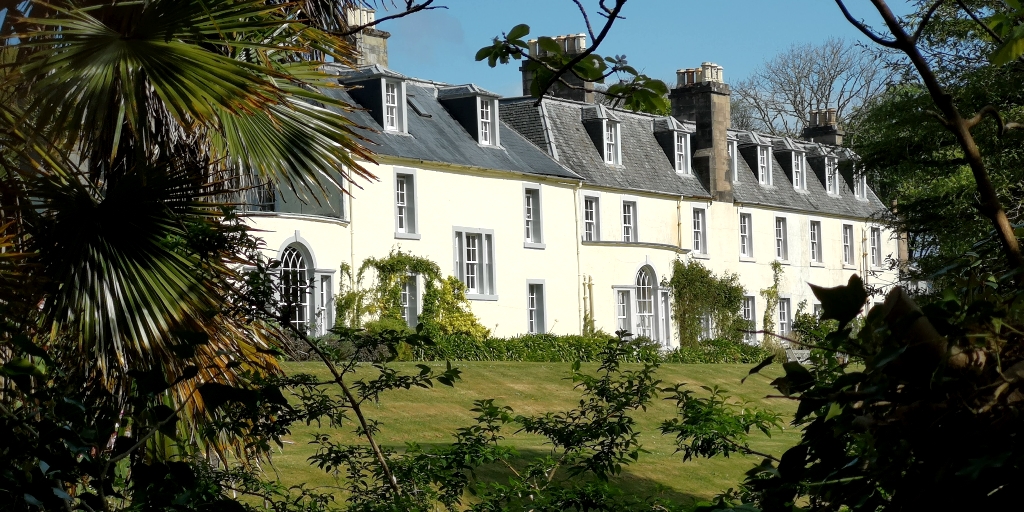
With beautiful rhododendrons and woodland, the more managed environment around Colonsay House has quite a different atmosphere from the rocky, moorland landscape that characterises the rest of the island.
Beyond Colonsay House, it is only a short walk further to reach one of Colonsay’s most iconic places: the magnificent Kiloran Bay. The shape of the landscape means that you don’t really get to see the beach until you’re right upon it by the parking area, but the view of beautiful golden sand stretching into the distance – as featured on 2018’s 50p stamp, and in our Instagram post below – is truly breathtaking.
That’s not the extent of it, though. Walk across the beach and pick up the track towards Balnahard and you can reward yourself with an even more magnificent view from the top of Carnan Eoin, Colonsay’s highest hill.
The views are superb in all directions – with both Mull and Jura clearly visible – but it’s the view back over Kiloran Bay that is perhaps the most special.
We were always going to include a Colonsay scene in our second Graham Land “Islands of the United Kingdom” Cinderella issue – and there was certainly no shortage of contenders – but, in the end, our choice couldn’t be anything other than Kiloran Bay viewed from Carnan Eoin.
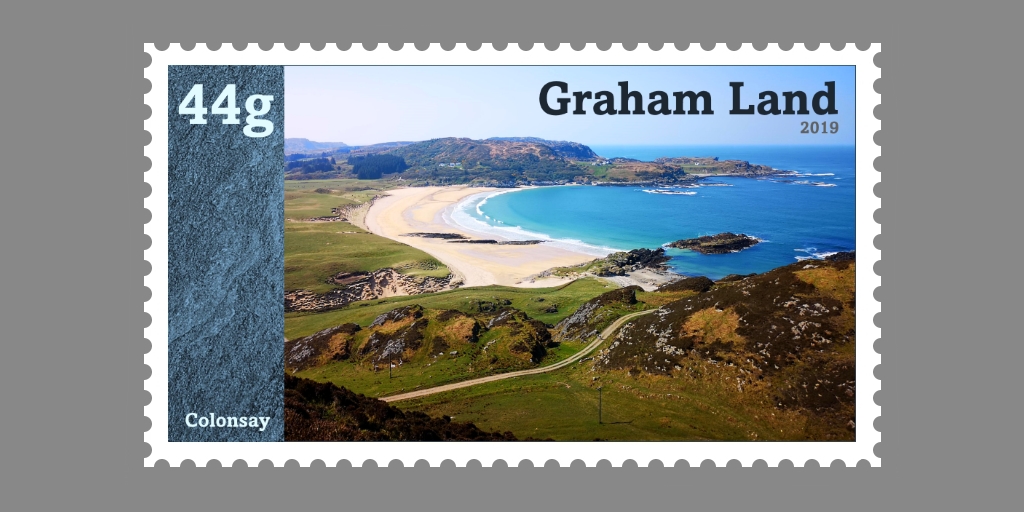
As you can tell, we loved our week on Colonsay and hope one day to return, though we’ll be lucky to get weather as fine for walking as we enjoyed this time.
In the meantime, we can continue to enjoy the memories that the scenes depicted on Colonsay’s stamps now evoke – and look forward to seeing what beautiful and historic places feature on future years’ issues.
Shop current Colonsay items
-
Only 1 left in stockAdd to basket
-
8 left in stockAdd to basket
-
15 left in stockAdd to basket
